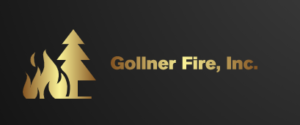Michael gives invited talk at Missoula Fire Sciences Lab
Michael recently gave an invited talk at the Missoula Fire Sciences Lab on Januray 10, 2013. They’ve posted the talk online, which you can view here:
They’ve posted the talk online, which you can view here:
http://videos.firelab.org/ffs/2012-13Seminar/011013Seminar/011013Seminar.html
It was an amazing trip – they’re doing some great research on wildfires and I encourage anyone interested to checkout firelab.org to check out all of the amazing things they’re doing!
Buoyancy Effects on Burning Behavior and Flame Spread
Abstract:
Experimental techniques have been used to investigate two upward flame spread phenomena of particular importance for fire safety and wildfire applications. First, a thermally thick slab of polymethyl methacrylate was used to study the effects of the inclination angle of a fuel surface on upward flame spread. By performing experiments on 10 cm wide by 20 cm tall fuel samples it was found that the maximum flame-spread rate, occurring nearly in a vertical configuration, does not correspond to the maximum fuel mass-loss rate, which occurs closer to a horizontal configuration. A detailed study of both flame spread and steady burning at different angles of inclination revealed the influence of buoyancy-induced flows in modifying heat-flux profiles ahead of the flame front, which control flame spread, and in affecting the heat flux to the burning surface of the fuel, which controls fuel mass-loss rates. Changes in the burning rate across the width of the fuel sample also suggest the changing nature of air entrainment as the fuel is inclined towards the vertical.
Second, vertical arrays of horizontally protruding wood matchsticks were used to investigate the influence of the spacing of discrete fuel elements on rates of upward flame spread. Rates of upward flame spread were found to increase dramatically for spacings between 0 cm and 0.8 cm and experienced only a slight increase thereafter. Based on these observations, the influence of convective heating was hypothesized to dominate this spread mechanism, and predictions of ignition times were developed using convective heat-transfer correlations. Mass-loss rates followed a similar pattern and were predicted along with matchstick burnout times using a droplet burning theory extended for a cylindrical geometry.
View the flyer here:
http://www.firelab.org/Publications/seminars/2012-2013/011013Gollner.pdf
default
Related Posts
Glory Casino On-line ️ Play From The Authorized Internet Site In BangladeshParis Olympics 2024 Live Updates: Day 9 Noah Lyles Wins Mens 100m Gold; Usa ...
1win Apk Télécharger App Pour Android Ou Ios Gratuitement 20241win Ci: Découvrir Une Experience Sobre Paris Et Amusements InégaléeContentPourquoi Ne Puis-je Pas Installer 1win App ...
Slot Koordinatörü Ne İş Yapar, Nasıl Olunur, Maaşı Nedir?"Slot Machine Nedir?ContentSlot KoordinatörüSlot Ne Demek? İngilizcede Slot'ın AnlamıSlot Için Daha Fazla AnlamSweet Bienestar Oyun Mudur, Kumar ...
 They’ve posted the talk online, which you can view here:
They’ve posted the talk online, which you can view here: